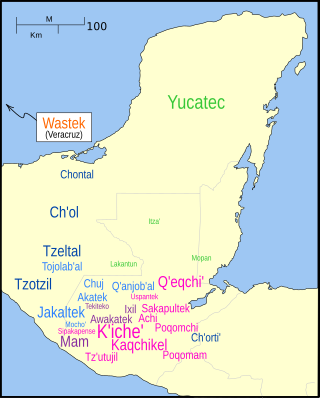Related Research Articles
A transitive verb is a verb that accepts one or more objects, for example, 'to enjoy' in Donald enjoys music. This contrasts with intransitive verbs, which do not have objects, for example, 'to arise' in Donald arose.
In grammar, an intransitive verb is a verb whose context does not entail a direct object. That lack of transitivity distinguishes intransitive verbs from transitive verbs, which entail one or more objects. Additionally, intransitive verbs are typically considered within a class apart from modal verbs and defective verbs.
In economics, utility is a measure of the satisfaction that a certain person has from a certain state of the world. Over time, the term has been used in at least two different meanings.

In economics, an indifference curve connects points on a graph representing different quantities of two goods, points between which a consumer is indifferent. That is, any combinations of two products indicated by the curve will provide the consumer with equal levels of utility, and the consumer has no preference for one combination or bundle of goods over a different combination on the same curve. One can also refer to each point on the indifference curve as rendering the same level of utility (satisfaction) for the consumer. In other words, an indifference curve is the locus of various points showing different combinations of two goods providing equal utility to the consumer. Utility is then a device to represent preferences rather than something from which preferences come. The main use of indifference curves is in the representation of potentially observable demand patterns for individual consumers over commodity bundles.
Independence of irrelevant alternatives (IIA), also known as binary independence, the independence axiom, is an axiom of decision theory and economics describing a necessary condition for rational behavior. The axiom says that a choice between and should not depend on the quality of a third, unrelated outcome .
In linguistic typology, split ergativity is a feature of certain languages where some constructions use ergative syntax and morphology, but other constructions show another pattern, usually nominative–accusative. The conditions in which ergative constructions are used vary among different languages.
In linguistics, morphosyntactic alignment is the grammatical relationship between arguments—specifically, between the two arguments of transitive verbs like the dog chased the cat, and the single argument of intransitive verbs like the cat ran away. English has a subject, which merges the more active argument of transitive verbs with the argument of intransitive verbs, leaving the object distinct; other languages may have different strategies, or, rarely, make no distinction at all. Distinctions may be made morphologically, syntactically, or both.
In linguistic typology, ergative–absolutive alignment is a type of morphosyntactic alignment in which the single argument ("subject") of an intransitive verb behaves like the object of a transitive verb, and differently from the agent ("subject") of a transitive verb. Examples include Basque, Georgian, Mayan, Tibetan, and certain Indo-European languages. It has also been attributed to the Semitic modern Aramaic languages. Ergative languages are classified into two groups: those that are morphologically ergative but syntactically behave as accusative and those that, on top of being ergative morphologically, also show ergativity in syntax. No language has been recorded in which both the morphological and syntactical ergative are present. Languages that belong to the former group are more numerous than those to the latter. Dyirbal is said to be the only representative of syntactic ergativity, yet it displays accusative alignment with certain pronouns.

In linguistic typology, nominative–accusative alignment is a type of morphosyntactic alignment in which subjects of intransitive verbs are treated like subjects of transitive verbs, and are distinguished from objects of transitive verbs in basic clause constructions. Nominative–accusative alignment can be coded by case-marking, verb agreement and/or word order. It has a wide global distribution and is the most common alignment system among the world's languages. Languages with nominative–accusative alignment are commonly called nominative–accusative languages.
In mathematics, intransitivity is a property of binary relations that are not transitive relations. This may include any relation that is not transitive, or the stronger property of antitransitivity, which describes a relation that is never transitive.
In linguistics, a causative is a valency-increasing operation that indicates that a subject either causes someone or something else to do or be something or causes a change in state of a non-volitional event. Normally, it brings in a new argument, A, into a transitive clause, with the original subject S becoming the object O.
In gambling, economics, and the philosophy of probability, a Dutch book or lock is a set of odds and bets that ensures a guaranteed profit. It is generally used as a thought experiment to motivate Von Neumann–Morgenstern axioms or the axioms of probability by showing they are equivalent to philosophical coherence or Pareto efficiency.
In linguistic typology, tripartite alignment is a type of morphosyntactic alignment in which the main argument ('subject') of an intransitive verb, the agent argument ('subject') of a transitive verb, and the patient argument of a transitive verb are each treated distinctly in the grammatical system of a language. This is in contrast with nominative-accusative and ergative-absolutive alignment languages, in which the argument of an intransitive verb patterns with either the agent argument of the transitive or with the patient argument of the transitive. Thus, whereas in English, "she" in "she runs" patterns with "she" in "she finds it", and an ergative language would pattern "she" in "she runs" with "her" in "he likes her", a tripartite language would treat the "she" in "she runs" as morphologically and/or syntactically distinct from either argument in "he likes her".

Tzeltal or Tseltal is a Mayan language spoken in the Mexican state of Chiapas, mostly in the municipalities of Ocosingo, Altamirano, Huixtán, Tenejapa, Yajalón, Chanal, Sitalá, Amatenango del Valle, Socoltenango, Las Rosas, Chilón, San Juan Cancuc, San Cristóbal de las Casas and Oxchuc. Tzeltal is one of many Mayan languages spoken near this eastern region of Chiapas, including Tzotzil, Chʼol, and Tojolabʼal, among others. There is also a small Tzeltal diaspora in other parts of Mexico and the United States, primarily as a result of unfavorable economic conditions in Chiapas.

The liberal paradox, also Sen paradox or Sen's paradox, is a logical paradox proposed by Amartya Sen which shows that no means of aggregating individual preferences into a single, social choice, can simultaneously fulfill the following, seemingly mild conditions:
- The unrestrictedness condition, or U: every possible ranking of each individual's preferences and all outcomes of every possible voting rule will be considered equally,
- The Pareto condition, or P: if everybody individually likes some choice better at the same time, the society in its voting rule as a whole likes it better as well, and
- Liberalism, or L : all individuals in a society must have at least one possibility of choosing differently, so that the social choice under a given voting rule changes as well. That is, as an individual liberal, anyone can exert their freedom of choice at least in some decision with tangible results.
In linguistics, valency or valence is the number and type of arguments and complements controlled by a predicate, content verbs being typical predicates. Valency is related, though not identical, to subcategorization and transitivity, which count only object arguments – valency counts all arguments, including the subject. The linguistic meaning of valency derives from the definition of valency in chemistry. Like valency found in chemistry, there is the binding of specific elements. In the grammatical theory of valency, the verbs organize sentences by binding the specific elements. Examples of elements that would be bound would be the complement and the actant. Although the term originates from valence in chemistry, linguistic valency has a close analogy in mathematics under the term arity.
In linguistics, transitivity is a property of verbs that relates to whether a verb can take objects and how many such objects a verb can take. It is closely related to valency, which considers other verb arguments in addition to direct objects. The obligatory noun phrases and prepositional phrases determine how many arguments a predicate has. Obligatory elements are considered arguments while optional ones are never counted in the list of arguments.
In economics, and in other social sciences, preference refers to an order by which an agent, while in search of an "optimal choice", ranks alternatives based on their respective utility. Preferences are evaluations that concern matters of value, in relation to practical reasoning. Individual preferences are determined by taste, need, ..., as opposed to price, availability or personal income. Classical economics assumes that people act in their best (rational) interest. In this context, rationality would dictate that, when given a choice, an individual will select an option that maximizes their self-interest. But preferences are not always transitive, both because real humans are far from always being rational and because in some situations preferences can form cycles, in which case there exists no well-defined optimal choice. An example of this is Efron dice.
Larry Temkin is an American philosopher and Distinguished Professor Emeritus of philosophy at Rutgers University. Temkin’s research focuses on normative ethics and political philosophy, and his work has been highly influential, particularly his works Inequality and Rethinking the Good.
In Adyghe, like all Northwest Caucasian languages, the verb is the most inflected part of speech. Verbs are typically head final and are conjugated for tense, person, number, etc. Some of Circassian verbs can be morphologically simple, some of them consist only of one morpheme, like: кӏо "go", штэ "take". However, generally, Circassian verbs are characterized as structurally and semantically difficult entities. Morphological structure of a Circassian verb includes affixes which are specific to the language. Verbal affixes express meaning of subject, direct or indirect object, adverbial, singular or plural form, negative form, mood, direction, mutuality, compatibility and reflexivity, which, as a result, creates a complex verb, that consists of many morphemes and semantically expresses a sentence. For example: уакъыдэсэгъэгущыӏэжьы "I am forcing you to talk to them again" consists of the following morphemes: у-а-къы-дэ-сэ-гъэ-гущыӏэ-жьы, with the following meanings: "you (у) with them (а) from there (къы) together (дэ) I (сэ) am forcing (гъэ) to speak (гущыӏэн) again (жьы)".
References
- ↑ Ranyard, Rob (October 1977). "Risky decisions which violate transitivity and double cancellation". Acta Psychologica. 41 (6): 449. doi:10.1016/0001-6918(77)90003-8.